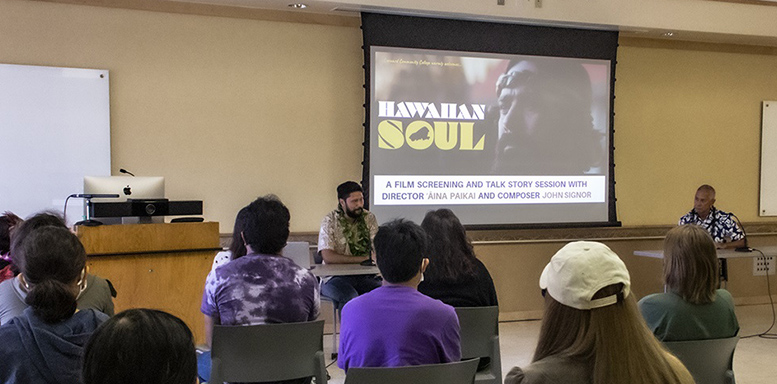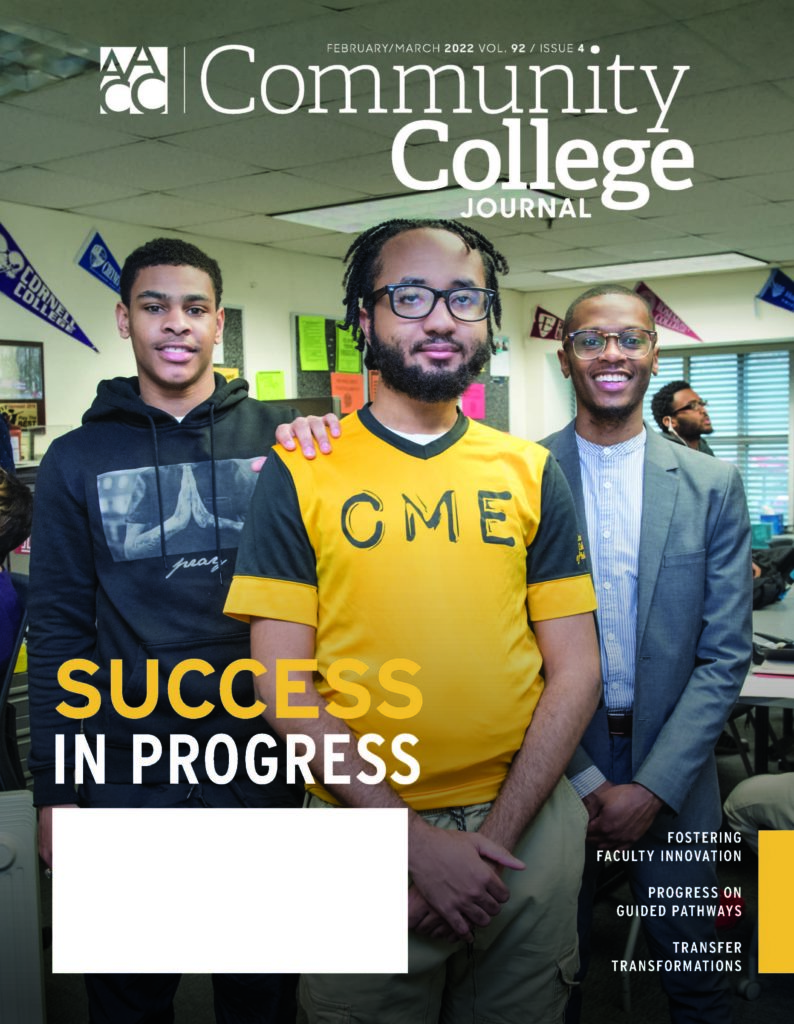To achieve professional success, faculty need a culture — along with a budget — to try out new, innovative ideas. Both at the individual campus or district level, as well as statewide, community colleges are working to make these sorts of initiatives happen.
“If a faculty member is passionate about what they’re teaching — regardless of whether a student is [initially] interested in that subject — if the faculty member is crazy-silly about it, that lights a fire and an excitement in the student that they might not otherwise have had,” says Erin Thompson, professor and coordinator of the Innovation Center for Teaching and Learning at Leeward Community College in Pearl City, Hawaii. “To support that excitement and remind them why they’re doing this is important, and it will show when they reach our students.”
This article is an excerpt from the new issue of the Community College Journal, published by the American Association of Community Colleges.
Leeward’s center has been around for more than 30 years and aims to provide faculty and staff with opportunities for innovation, professional growth, collaboration and leadership development with an eye toward sparking student success, Thompson says. The center does so through workshops, cohort programs, awards and other initiatives to support creative ideas.
“Teaching, by nature, is a very personal vocation,” she says. “We do it because we have a passion for it. The more we can engage the faculty and allow them opportunities to explore their passions, the more satisfied they can be as educators. This, in turn, translates to student success.”
Kelly Kennedy, an English as a second language (ESL) instructor at Leeward, sees the center as an interdisciplinary place for support and connection with other faculty.
“We often work in our own bubbles,” she says. “The innovation center is the place where we can all come together and learn from each other. It fosters this openness to learning and development and growth that, number one, makes our work more meaningful, and number two, it’s critical to student success that I continue to learn and grow as an instructor.”
Listening to students
Thompson has developed a workshop series this past year called “Getting to Know Our Students” that highlights student speakers from different student populations each month. Featured student groups have included Native Hawaiian, Filipino and student parents.
“This series gives them a spotlight to tell us what they really need,” she says. “A lot of times, we as educators try to decide what’s best for our students. Nobody really asks them. They might have one seat at the table as a student representative of a committee or board. But we need to provide more opportunities to hear their stories and receive their recommendations for how we can best support their college success.”
The center also provides faculty awards of between $500 and $1,000 based on proposals that range from culture to technology-focused, four of which are awarded per year.
In the coming year, the program will add two more $1,000 awards, to support “Innovations in Action.” Topic themes for these new awards may vary depending on the college’s greatest needs, such as increasing part-time student retention or addressing barriers faced by marginalized student populations.
An introductory semester-long cohort program called the Teaching Excellence Program targets new faculty and lecturers, providing a chance to reflect on their teaching and learn more about “the nuts-and-bolts of how to operate in our system,” she says. Another program, called Teaching Squares, puts faculty into groups of four who visit one another’s classes, and offer positive feedback and takeaways that lead to commitment to try new strategies, Thompson says.
A third semester-long cohort program called Kawaimanomano (The Many Waters) provides faculty and staff the opportunity to learn about Hawaiian culture in order to improve their work at the college.
With 27% of its student population identifying as Native Hawaiian, Leeward serves the largest number of Native Hawaiian students of any community college in the world — which means the opportunity for faculty to learn more the culture is critical.
“The end goal is to take some of that knowledge and come up with an innovation in teaching and/or work practice,” Thompson says. “To foster innovation in faculty, you must first give them the latitude to do so, and then you provide opportunities for collaboration.”
Including adjunct faculty
That’s perhaps even more critical for adjunct faculty, which is why Thompson opened the Teaching Excellence Program to them after it had been exclusive to full-timers.
“My personal philosophy, which has helped me in this position, is that everyone on our campus is an equal; everyone has an equally important role in student success,” she says.
The center also offers a lecturer mentor group that pairs longtime contract lecturers with less experienced ones, provides workshops to groups of lecturers and brings issues of common concern to light, Thompson says. “We want them to feel like they have a voice,” she says. “We need everybody to come together more than ever to work as one team. We really strive to do that.”
Kennedy credits Thompson for pulling together a hybrid professional development day last March, a continuation of an annual event that had been in person until 2019 and didn’t happen in 2020 as the pandemic hit. She co-chaired the day and helped to both organize workshops and take care of technical details.
“We had opportunities to share with each other—we call it talk-story — and to check in with one another,” Kennedy says.
The center also has formed a committee called Teaching Guidelines and Issues for Faculty — TGIF for short — which does monthly professional development workshops, Kennedy says.
“We’re trying to get a feel for what skills people need [and] what’s on their minds,” she says.
Another innovation has been a faculty book club with different books nominated each semester that relate somehow to teaching.
“We can see our work with new eyes,” she adds, “whether that’s through new information we gained, or new perspectives, or ways of talking about, engaging with what we read, and one another.”


